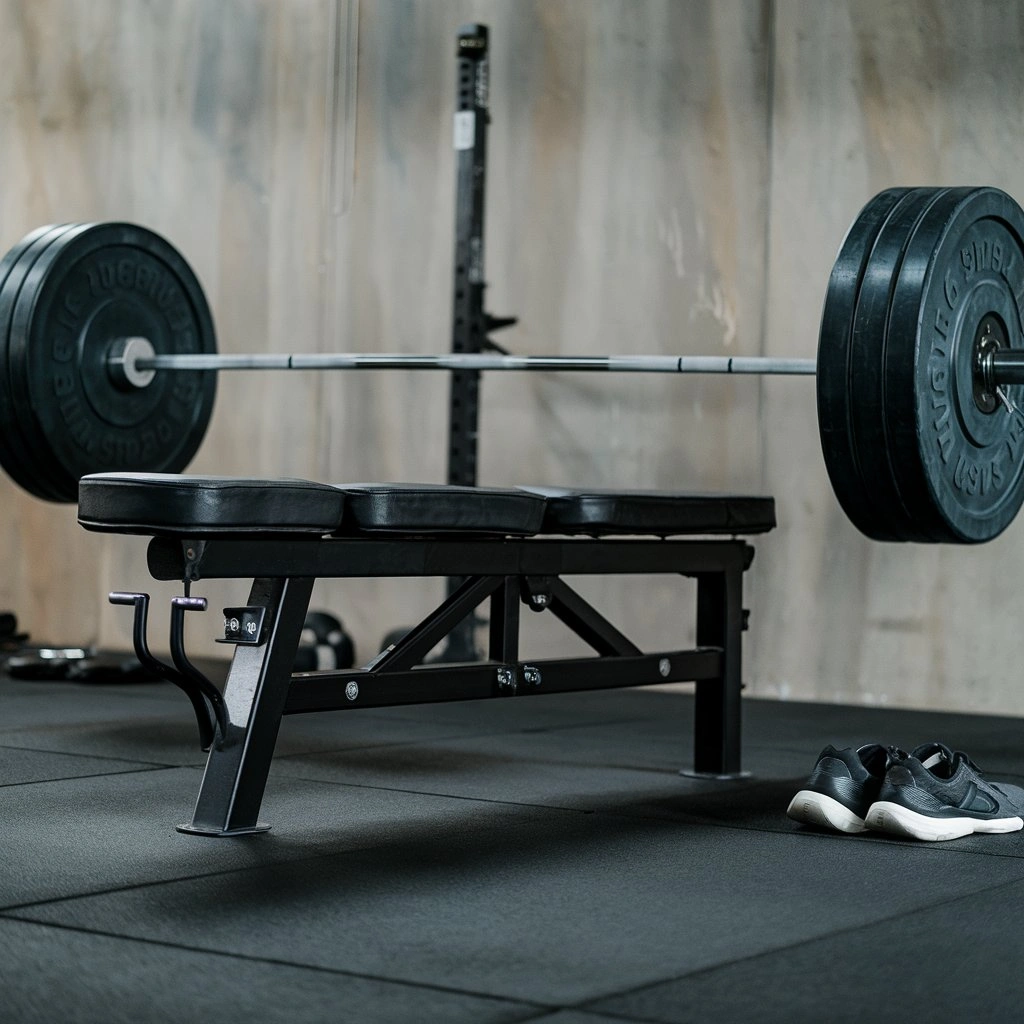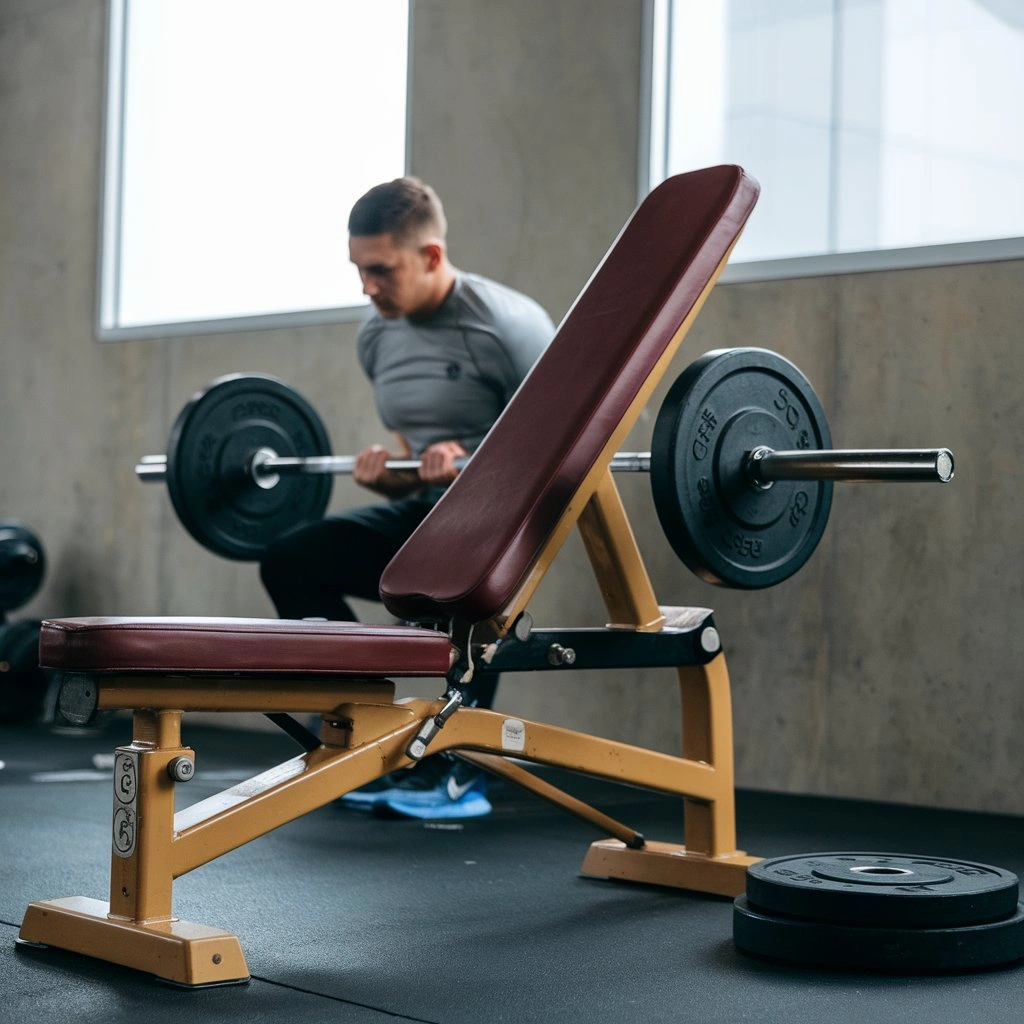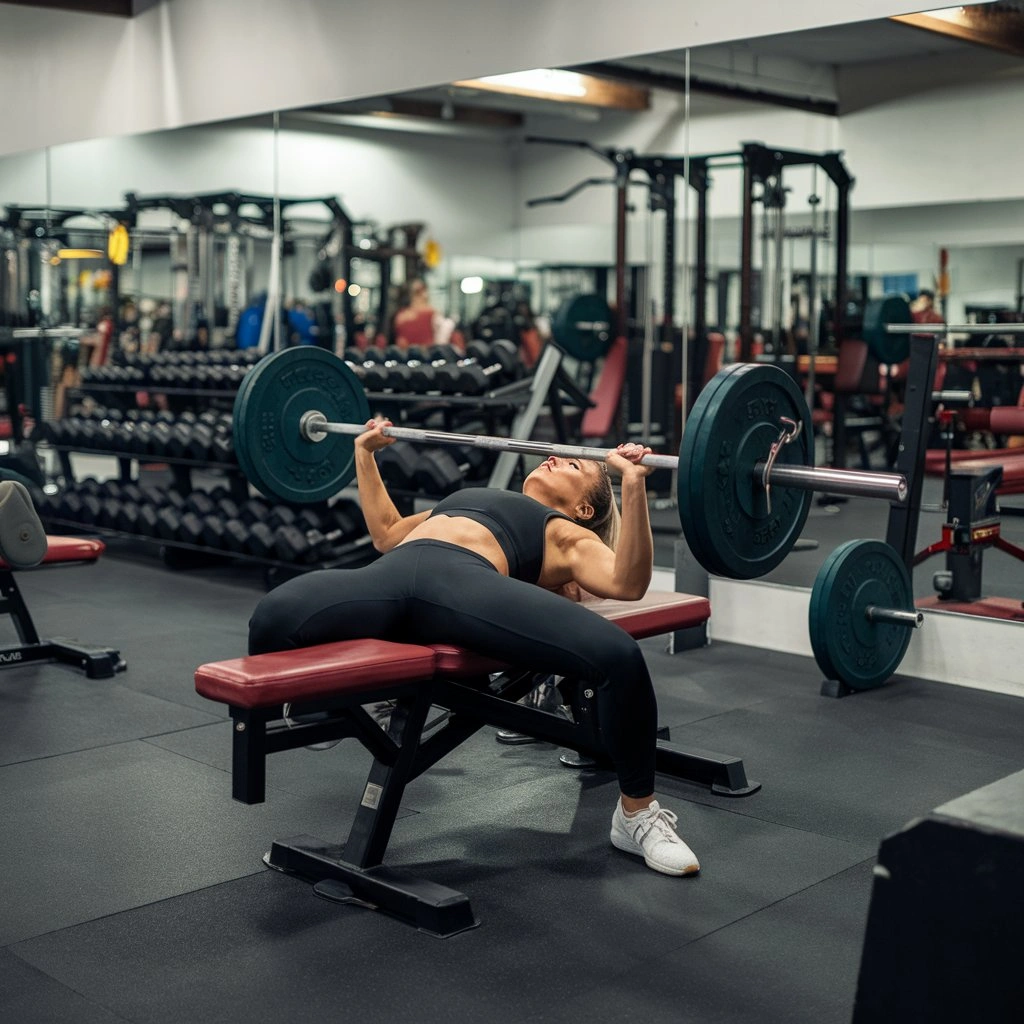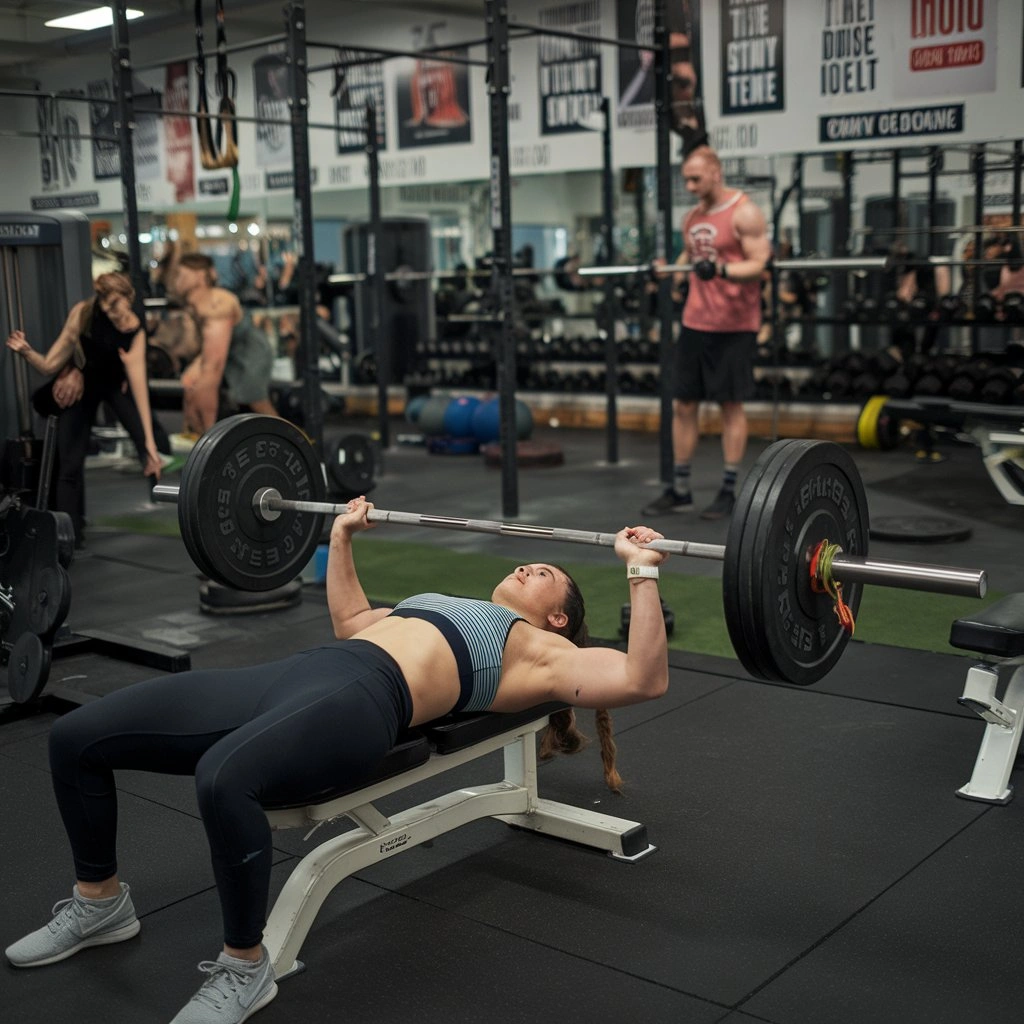Hey there, gym enthusiasts! “Adjusting gym bench ” those benches in the weight area have adjustable parts. It’s to make things fancy! Adjusting the bench is a key step in getting the most out of your workout. Moreover, it keeps you safe.
Think of it like this: using the right tool for the job. You adjust the bench to fit the exercise. It’s like picking the perfect tool for your muscles. This helps you target the right areas and get a stronger, more effective workout.
But that’s not all! Adjusting the bench also plays a big role in keeping you safe. Using the wrong tool can lead to injury. A bench that is not set can stress your body in unexpected ways. You can avoid aches, pains, and even worse injuries by taking a few seconds to adjust the bench.
So, how exactly do you adjust the bench? Don’t worry, it’s pretty simple! We’ll go over it in detail in the following part. But for now, remember: proper bench change is your key to a safe, effective, and Awesome Workout!
 Pre-Adjusting Gym Bench and Preparations
Pre-Adjusting Gym Bench and Preparations
We learned why adjusting the Gym Bench is a game-changer for your workout. Now, let’s dive into the first step: pre-adjustment preparations! This might sound fancy. But, it’s about getting ready to adjust the bench. You need to do it and.
Here’s what you need to do before you start fiddling with knobs and levers
Assessing the Current Position
- Eyes on the Prize: Take a good look at the bench. Is the back flat, inclined (sloped upwards), or declined (sloped downwards)? Is the seat flat or angled? Knowing the current position helps you figure out how much you need to adjust.
- Lock and Load (Safely): Most benches have locking mechanisms to keep them secure. Make sure any locks are currently engaged before you start making changes. This prevents the bench from collapsing unexpectedly while you’re adjusting it.
- Weight Check: Is there any equipment left on the bench? Maybe a forgotten dumbbell or a rogue weight plate. Clear anything that might get in your way or become a hazard when you adjust the bench.
Clearing the Surrounding Area
- Give Yourself Space: Picture yourself moving the bench. Picture yourself moving it back and forth or reaching underneath it. Make sure there’s enough clear space around the bench for you to adjust it safely. Don’t be afraid to politely ask someone to move their equipment if it’s blocking your space.
- Foot Traffic Control: Gyms can get busy! Look around for people walking by or using nearby equipment. If it’s busy, wait for a clear moment before moving the bench. This will prevent you from bumping into someone or causing an accident.
- Safety First: Are there any cables, wires, or uneven flooring around the bench? These could be tripping hazards. If you spot any potential dangers, let a gym staff member know so they can address them.
 Step-by-Step Bench Change Process
Step-by-Step Bench Change Process
Alright, champions! We’ve covered the importance of proper bench change and how to prepare for it. Now, let’s get down to business and learn the step-by-step process of adjusting the gym bench like a pro!
Positioning the Bench
- Choosing the Ideal Location: The first step is finding the perfect spot for your workout. Look for a flat, even area with enough space around the bench. Avoid areas with cables, wires, or uneven flooring that could be tripping hazards. Remember, you might need to move the bench back and forth a bit during change. So, give yourself some space.
- Ensuring Stability: Once you’ve found your spot, check the bench’s stability. Most benches have wheels for easy movement. But, you want them locked before you start adjusting anything. Look for levers or knobs that lock the wheels in place. Engage the locks to prevent the bench from rolling away.
Adjusting the Seat
- Locating Change Mechanisms: Now, let’s focus on the seat. Many benches have seats that you can raise or lower using the adjustable feature. Look for levers, knobs, or pins near the seat base. These are your change mechanisms. You might find them on the sides, underneath the seat, or even on the back support.
- Active sentence: You might find them on the sides, under the seat, or even on the back support.
- Setting the Seat Height: The ideal seat height depends on the exercise you’re planning. For exercises like chest presses or dumbbell rows, keep your feet flat on the floor. Bend your knees at a 90-degree angle. Adjust the seat height until you achieve this comfortable and stable position.
Adjusting the Backrest
- Backrest change options are key. The backrest is the other part of the bench. It also needs adjusting. Look for the mechanisms that control the backrest angle. It could be a lever, a knob with different positions, or even a pop-pin system. Some benches have one change point. Others might offer separate adjustments for the upper and lower backrests.
- Setting the Backrest Angle: The backrest angle depends on the exercise you’re doing. For chest exercises, like incline dumbbell press, you’ll want an incline angle. The backrest angles upwards. Angling down the backrest is necessary for lower chest exercises. For exercises like seated bicep curls, you’ll want the backrest to be flat or slightly inclined.
Here’s a quick cheat sheet for common exercises and backrest angles
- Chest Press: Flat or slight incline (15-30 degrees)
- Incline Dumbbell Press: Moderate incline (30-45 degrees)
- Decline Dumbbell Press: Moderate decline (15-30 degrees)
- Seated Bicep Curls: Flat or slight incline (0-15 degrees)
- Shoulder Press: Flat or slight incline (0-15 degrees)
- Confirming Change
- Check Stability Twice. Once you’ve set the seat and backrest, double-check the bench’s stability. Give it a gentle push or pull to see if it wobbles. If it does, re-adjust the locking mechanisms or find a more stable spot.
- Testing for Comfort and Alignment: Finally, hop onto the adjusted bench and see how it feels. Is your back supported? Are your feet flat on the floor with your knees at a comfortable angle? Make tiny adjustments if needed. They ensure comfort and alignment in your workout.
Safety Measures and Tips
We’ve learned to adjust the gym bench like a pro. But, even a perfect change is worthless if it’s not done. Here are some crucial safety measures and tips to keep in mind:
Using Help if Needed
- Don’t be shy to ask. Adjusting the bench might seem simple. But, it’s okay to ask for help if you’re unsure. Gym staff members are there to assist you. They can explain how the bench adjusts. They can help you find the right settings for your exercise.
- Buddy Up. If you’re lifting heavy weights or trying a new exercise, consider working out with a spotter. A spotter can help you adjust the bench and give extra support during your sets. This is especially true when lowering the weight. This can reduce the risk of injury.
Avoiding Abrupt Adjustments
- Slow and Steady Wins the Race: When adjusting the bench, avoid making sudden movements. Always adjust the levers, knobs, or pins. This helps you keep control. It stops the bench from slipping or collapsing.
- Mind Your Back: Bending down to adjust the seat or backrest can put strain on your back. If possible, adjust the bench from standing. Or, squat down with proper form. Keep your back straight and core engaged. Don’t be afraid to ask a friend to help if reaching the change mechanisms is difficult.
 Regular Maintenance Checks
Regular Maintenance Checks
- Inspect before you flex. Before using any gym equipment, including the bench, inspect it. Look for safety hazards. Look for loose parts, worn-out padding, or malfunctioning change mechanisms. If you spot any issues, report them to a gym staff member immediately. Do not use a damaged bench until you repair it.
- Listen to Your Body. The proper change prevents injuries. But, it’s also important to listen to your body. If you feel pain during your workout, stop the exercise. Adjust the bench or rest if needed. Pushing through pain can lead to serious injuries.
Here are some extra safety tips to remember
- Know Your Limits: Don’t attempt to lift weights that are too heavy for you. Start with lighter weights and increase the weight as you get stronger. This helps maintain proper form and reduces the risk of injury.
- Warm-Up is Key: Always perform a proper warm-up before lifting weights. This prepares your muscles for the workout and helps to prevent injuries.
- Use Proper Form: Focus on maintaining proper form throughout your exercises. This ensures you target the right muscles. It cuts the risk of strain or injury. If you’re unsure about the proper form for an exercise, ask a trainer for guidance.
- Stay Hydrated: Drink plenty of water before, during, and after your workout. This will help you stay hydrated. Dehydration can lead to fatigue and muscle cramps, increasing the risk of injury.
Pros and cons
The gym bench is adjustable. It adds versatility to your workouts. But, is it worth the extra effort to master the adjustments? Let’s weigh the pros and cons to help you decide.
Pros
- Targeted Workouts: You can adjust the bench’s incline, decline, or flat position. This lets you isolate specific muscle groups. It makes for a more targeted and effective workout. This allows you to focus on strengthening specific areas you want to develop.
- Increased Exercise Variety: One bench can transform into many pieces of equipment! Adjusting the bench widens the range of exercises you can do. You can do chest presses and incline dumbbell flies. You can also do decline sit-ups and shoulder presses. This keeps your workouts interesting and helps you avoid plateaus.
- Better form and safety go together. A well-adjusted bench keeps the body aligned during exercises. This reduces stress on your joints and muscles, minimizing the risk of injury. Additionally, some exercises must have a specific bench position for optimal form. Adjust the bench to achieve this. It leads to safer, more efficient workouts.
- Reduced Risk of Back Pain: Many exercises on a flat bench can strain your lower back. Adjusting the incline can help ease this pressure. It does so by providing back support and engaging your core muscles more. This is especially beneficial for exercises like dumbbell rows.
Cons
- Learning Curve: The change process is usually simple. But, finding the best angles for exercises requires research or guidance. New gym users might need time to learn the ropes.
- Potential for Misadjustment: If you’re unsure about the proper settings, you could adjust the bench wrong. This could lead to reduced workout effectiveness or, worse, an increased risk of injury.
- Time Investment: Adjusting the bench takes additional time compared to using a fixed bench. This might be a minor inconvenience, especially for those with limited gym time.
- Not All Gyms Offer Adjustable Benches: Some gyms might have only flat benches, limiting your exercise options.
Conclusion
Congratulations, gym warriors! You’ve now mastered the art of adjusting the gym bench! Remember, a properly adjusted bench is more than just a fancy feature – it’s the key to unlocking the full potential of your workout.
Importance of Regular Bench Adjustment
Think about it this way: using the wrong tool for a job makes it more difficult and less effective. The same applies to exercise. A bench that’s not adjusted to your exercise can lead to:
- Reduced Effectiveness: If the bench isn’t set to target the right muscle groups, your workout won’t be as effective.
- Increased Risk of Injury: An improperly adjusted bench can put stress on your joints and muscles, increasing the risk of pain and injury.
- Decreased Motivation: If you’re constantly struggling with an uncomfortable or ineffective workout due to a poorly adjusted bench, it can quickly zap your motivation.
By taking a few extra seconds to adjust the bench properly, you’ll be setting yourself up for success. You’ll target the right muscles more effectively, minimize the risk of injury, and ultimately, have a more enjoyable and productive workout experience.
Achieving Optimal Workout Experience
Here’s a quick recap of the benefits you’ll reap by adjusting the gym bench before your workout:
- Targeted Workouts: Proper adjustment allows you to focus on specific muscle groups with greater efficiency, leading to faster results.
- Enhanced Safety: A stable and well-adjusted bench minimizes the risk of injuries, allowing you to train with confidence.
- Improved Comfort: The right positioning ensures proper body alignment and reduces strain on your back and joints, resulting in a more comfortable workout.
- Boosted Motivation: Knowing you’re using the equipment correctly and maximizing your workout potential can be a real motivator to keep pushing yourself and achieving your fitness goals.
So, the next time you head to the gym, don’t underestimate the power of the adjustable bench! Take a moment to follow the steps outlined in this guide, adjust the bench to fit your exercise, and experience the difference it makes in your workouts. Remember, a little preparation goes a long way in ensuring a safe, effective, and truly rewarding gym experience!

